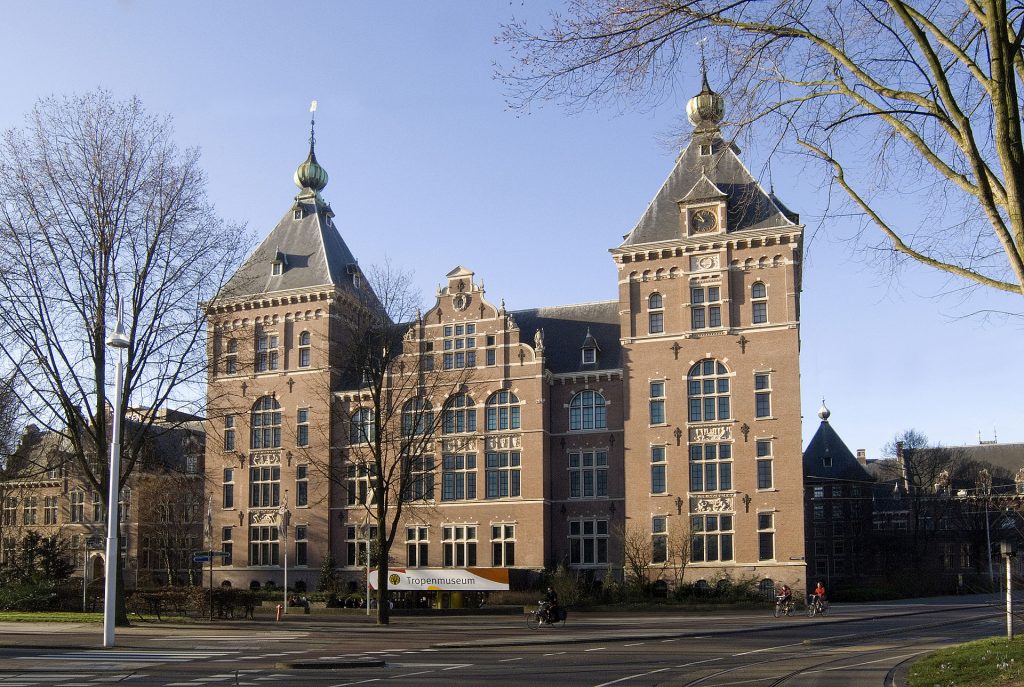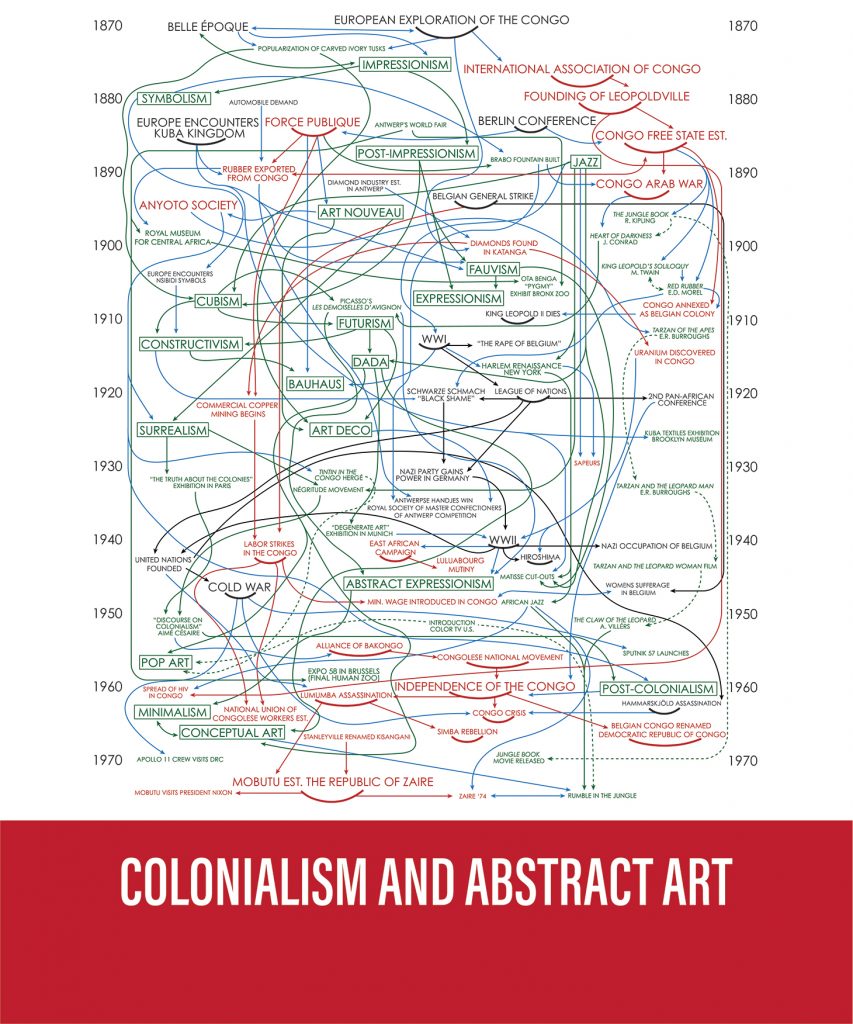CAA News Today
Global Conversations: Materiality and Mediation
posted by CAA — September 27, 2022
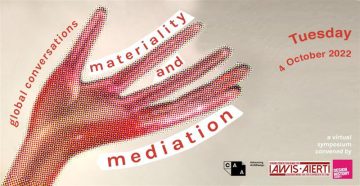
We are excited to introduce the presenters for the virtual symposium, Global Conversations: Materiality and Mediation, on October 4, 2022 from 11 am to 1 pm Eastern time. The event is organized by the College Art Association (CAA) and two of its international affiliated societies, the Design History Society and the International Association of Word and Image Studies. To register for the event, visit this page.
This global collaborative project brings together three intersecting constituencies—art and design, design history, word, and image studies—to examine how materiality and mediation intersect.
Four participating scholars will present on the following topics, followed by Q&A and discussion. The event will be recorded and shared online following the event.
This no-cost event is open to the public. Please consider donating to support no-cost programming and providing access to new and emerging scholarship.
CAA’s membership program connects you to the largest community of individuals and organizations working together and advocating to advance research, practice, and the impact of the visual arts. Visit our website for more information and to join our organization.
Questions? Email info@collegeart.org.
Interested in becoming an affiliate?
Arts organizations interested in joining CAA as an affiliated society can do so by visiting our website.
To join the Design History Society, please visit this page.
To join the International Association of Word and Image Studies, please visit this page.
Global Conversations: Materiality and Mediation
Presentations and Panelists
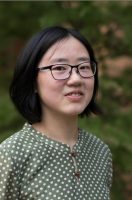
“Tavolino di gioie”: The Mediation of Material Techniques in Late Cinquecento Hardstone Inlaid Tables – Wenyi Qian, Ph.D. Candidate in Art History, University of Toronto, Toronto
Wenyi Qian is a Ph.D. candidate in early modern Italian art, with a focus on the relationship between artistic practice and knowledge culture of the period. Her dissertation examines the production of hardstone inlaid tables in late Cinquecento and Seicento Italy at the nexus of early modern craft knowledge, natural sciences, and courtly life and consumption. It aims to track technical crossovers between disparate artistic media and scales in the making of this genre of domestic furniture. She holds a BA in History of Art with Material Studies and an MA in History of Art from University College London. Prior to her doctoral research, she interned at the Museum of Fine Arts, Houston, and worked as a convenor of academic programs at OCAT Institute, Beijing. This latter experience led to her interest in the historical formation of the discipline in Europe, as well as transnational intellectual exchange around the ideas of the arts and humanities across Europe, America, and East Asia over the last century. In addition to academic research, her translation of Victor I. Stoichita’s L’Instauration du tableau: métapeinture à l’aube des temps modernes is forthcoming by the end of 2022.
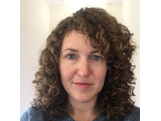
Mediating the Meaning of Textiles through Exhibition Displays in Israel, 1950s-1970s – Noga Bernstein, Marie-Sklodowska Curie Visiting Researcher, Hebrew University of Jerusalem
Noga Bernstein is an art and design historian, specializing in modern craft in the United States and Israel, with a particular focus on textiles. She is currently a visiting researcher at the Hebrew University in Jerusalem. Her current research project, funded by a Marie Sklodowska-Curie Fellowship, investigates the history of textile art and design in Israel between the 1940s-1990s. She also works on a book manuscript on the US-textile design Ruth Reeves. Dr. Bernstein is a recipient of grants from the Smithsonian Institution, the American Council of American Art and the Center for Craft. She completed her PhD in art history at Stony Brook University in 2019.
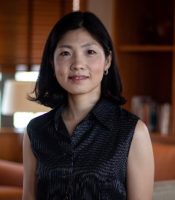

Made in Japan: Development of the Poster Medium in Japanese Commercial Art and Design – Nozomi Naoi, Associate Professor of Humanities, Yale-NUS College, Singapore
Erin Schoneveld, Associate Professor of East Asian Languages and Cultures and Director of Visual Studies, Haverford College, Haverford, Pennsylvania
Nozomi Naoi is Associate Professor of Humanities at Yale-NUS College with joint appointment at the Department of Japanese Studies, Faculty of Arts and Social Sciences at the National University of Singapore. She specializes in modern Japanese art and the media environment and is the author of Yumeji Modern: Designing the Everyday in Twentieth-Century Japan (University of Washington Press, 2020; awarded the Honorable Mention for the John Whitney Hall Prize 2022). Her current project focuses on Japanese poster design and the role of department stores, designers, and global modernism during the early twentieth century and she is currently preparing her second book manuscript titled: Modern Design and the Japanese Department Store: Visualizing the New Lifestyle. She is also co-curating an exhibition on postwar Japanese posters at the Poster House Museum in New York, opening in March 2023.
Erin Schoneveld is Associate Professor of East Asian Languages and Cultures; and Associate Professor and Director of Visual Studies at Haverford College. Schoneveld’s scholarship and teaching engages with modern and contemporary Japanese art, cinema, and visual culture. Her book Shirakaba and Japanese Modernism: Art Magazines, Artistic Collectives, and the Early Avant-garde (Brill 2019) provides a critical framework for understanding the tensions between the local and the universal that accompanied the global development of modernism. Schoneveld’s current book project Naomi Kawase and the Future of Japanese Cinema examines the role of Japanese women directors within national and world cinema cultures by evaluating Kawase’s auteur status at the intersection of film history, reception theory, gender, and identity. Schoneveld is also co-curating an exhibition on twentieth century Japanese poster art and design at the Poster House Museum in New York, opening in March 2023.
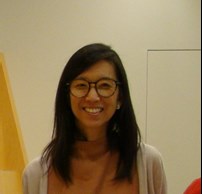
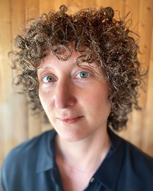
Mine Craft: Design Histories of Mining – Ellen Huang, Associate Professor of Art and Design History, ArtCenter College of Design, Pasadena, California
Arden Stern, Assistant Professor of Humanities and Sciences, ArtCenter College of Design, Pasadena, CA
Ellen Huang, Ph.D. is a historian of material culture, art, and technology at ArtCenter College of Design (Pasadena, CA, USA). In addition to teaching and research, Huang is also a curator, having organized exhibitions through universities such as the Ackland Museum of Art (UNC Chapel Hill), University of San Francisco and the Cantor Arts Center at Stanford University, as well as for civic museums. Huang is finishing a manuscript about Jingdezhen porcelain as material design in late-imperial Chinese and global history. Huang has contributed to publications for museums, journalistic forums, and academic journals, including Archives of Asian Art, Journal of World History, Art&Object, Jewels in Buddhist Imaginaries (University of Hawai’i Press), the National Museum of Korea Research Series, and Oxford Bibliographies.
Arden Stern, Ph.D. is a design historian whose scholarship focuses on the intersecting histories of US labor, graphic design, and visual culture. They are currently an Assistant Professor of Humanities & Sciences at ArtCenter College of Design (Pasadena, CA, USA), also teaching in the Media Design Practices program, and have served as Visiting Faculty in the Department of Anthropology at Wayne State University. They have contributed to various scholarly and journalistic publications, including the Design & Culture journal, Design Issues, and Print magazine, and are currently working on a manuscript that analyzes labor and class histories of graphic design in the United States from the late nineteenth century through the present.
Members’ Corner: Former CAA President Judith Brodsky Co-Curates Retrieving the Life and Art of James Wilson Edwards And A Circle of Black Artists
posted by CAA — July 25, 2022

African Sky, an oil painting by James Wilson Edwards, will be included in the Arts Council of Princeton’s Retrieving the Life and Art of James Wilson Edwards and a Circle of Black Artists, an exhibition featuring the work of a diverse and vibrant regional arts community not acknowledged in contemporary American art history on view at the Arts Council of Princeton this October.
The Arts Council of Princeton will present a revolutionary exhibition in October 2022. Retrieving the Life and Art of James Wilson Edwards and a Circle of Black Artists reveals how Black artist/teachers were integral and influential members in a predominantly white regional community in the last quarter of the 20th century. While there have been blockbuster exhibitions of a few contemporary Black artists during recent years of efforts by museums and galleries to become more diverse, this is one of the first exhibitions to explore the historical context from which these artists emerged.
Co-curators Judith K. Brodsky and Rhinold Ponder say “this has been a magnificent voyage of discovery about the lives and roles in art history of Black artists who have largely been forgotten or ignored as well as a reminder of the significance of Black collectors in preserving and promoting the history of Black artists and ensuring that they are eventually remembered for their contributions. We trust that our efforts here encourage others to restore Black artists and arts communities to their rightful places in American national and regional histories.” Brodsky is a Distinguished Professor Emerita at the Department of Visual Arts at Rutgers and previously served as a president of CAA. Ponder is an artist, activist, writer, lawyer, and founder of Art Against Racism.
This exhibition focuses on five late 20th-century master artists who lived and worked within 25 miles of each other in the geographic region from Princeton, New Jersey to New Hope, Pennsylvania: James Wilson Edwards, Rex Goreleigh, Hughie Lee-Smith, Selma Hortense Burke, and Wendell T. Brooks. These Black artists represent a diverse and vibrant regional arts community largely unknown in contemporary American art history. Nearly all the works in this exhibition come from private collections, highlighting the importance of collectors of color in restoring Black and brown artists to American art history and how their collecting sheds light on the systemic racism of the American art world. Recent attention to diversity in museum collections has revealed that only 1.2% of the holdings are by African American artists.
Retrieving the Life and Art of James Wilson Edwards and a Circle of Black Artists will be on view in the Arts Council of Princeton’s Taplin Gallery from October 14 through December 3, 2022 and will include an opening reception, panel discussion, and more. Additional information can be found on the Art Council of Princeton’s website.
Jonathan Fineberg and Art Since 1940
posted by CAA — June 22, 2022
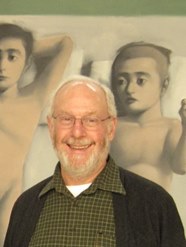
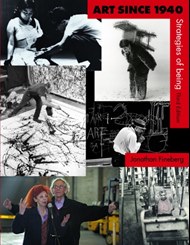
A prolific art historian and critic in the fields of 20th and 21st century art and the psychology of art, Jonathan Fineberg has shaped generations of students with his many publications and textbooks. As a long-time member of CAA, Fineberg describes his experience with the organization:
“Seymour Slive, one of my favorite art history professors in college told me I should join the College Art Association if I wanted to be an art historian. CAA was (is), he pointed out, my professional association! I signed up right away (in 1966) and have remained an active member ever since. I’ve served on the board, I started the “artist interviews” many years ago, I’ve chaired and participated in many sessions and committees over more than fifty years, and until COVID hit I think I only missed one annual conference – my personal protest against the racism and anti LGBTQ+ stance of the state of Louisiana (that was the year we went to New Orleans). I love CAA for the many things it does for artists and art historians.
In order to give back this year I decided that I have made my fair share of royalties on my survey book Art Since 1940: Strategies of Being, so I took back the rights from the publisher and have given a high-resolution copy of the last edition to CAA for free download by any students and teachers who want it. You will find it here. I hope it inspires students to love contemporary art as I do and to bring them to join their fellow travelers in the CAA.”
CAA is immensely grateful for Fineberg’s generous donation to CAA, a digital version of his seminal work, Art Since 1940: Strategies of Being, 3rd Edition. Fineberg is offering this publication at no-cost access to both members and non-members for three years. A valuable pedagogical resource at many universities, this text is out of print, which presents a problem for many art history professors and students who cannot obtain copies. We are grateful for Fineberg’s donation, and for his fifty-plus-year membership in CAA.
Museum Committee Research Survey: Developing New Directions with College Art Association Member Input
posted by CAA — August 26, 2021

Visitors in the Musée du Louvre in 2020 © Antoine Mongodin
In the spring of 2021, the CAA Museum Committee initiated a survey of our members for the purposes of revising current directions and charting new ones that respond to updated knowledge of their concerns.
The results indicate that the Museum Committee‘s previous and planned Conference sessions and professional development workshops in 2021–2022 are appropriate, that they should publicize their presence more, and should use these projects and others to strengthen connections with professional museum groups; encourage diversity, decolonization, and the use of museums to educate; in addition to fight for salary equity. In this endeavor, they ask any interested CAA members to join and help in this mission.
Key Takeaways of the Report
In general, respondents likely appreciate the recent focuses and activities of the Committee, yet wish they would also move forward in new directions.
Both the CAA panels and professional development workshops should be continued and can be used to achieve the following desired goals culled from survey responses:
- Help publicize the Museum Committee more broadly.
- Give museum and curatorial studies students, young professionals, and museum professionals, particularly those from underrepresented groups, necessary resources as they start their careers, and mentor persons who want to become museum professionals or teach museum/curatorial studies, including in concert with art history coursework.
- Support the function of museums as pedagogical sites, especially during the processes of decolonizing and defining decolonization.
- Develop and disperse a list of curatorial/museum studies programs in American universities, including those offered on conjunction with art history training, and perhaps have a dedicated space on CAA’s website or another location with a link on the CAA website homepage to publicly disperse this list.
- Renew efforts to craft and chart the implementation of policy statements and best-practice guidelines particularly concerning salary equity and unpaid internships, among similar issues relevant to the field, and to do so in concert with professional museum organizations, such as the Association of Art Museum Curators (AAMC), American Alliance of Museums (AAM), and the Association of Academic Museums and Galleries (AAMG). One way to do this is to have present and future Museum Committee members actively reach out to persons within professional museum groups to create joint projects.
CWA Picks: August 2021
posted by CAA — August 03, 2021
The August “Picks” from the Committee on Women in the Arts respond to the danger and uncertainty that characterizes the contemporary moment and explore how gender figures into the possibility of imagining new forms of collectivity.
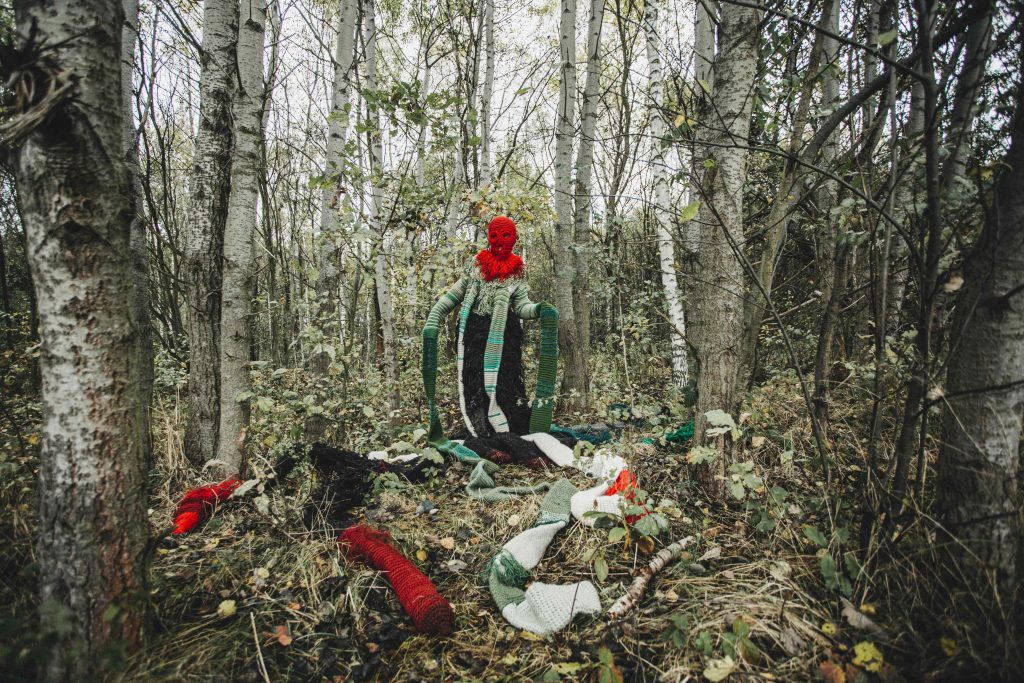
Malgorzata Markiewicz, “Medusa: Sensing-With and Thinking-With the World,” 2021. Print on textile. Photo by Grzesiek Mart
Mona Hatoum
April 16 – September 12, 2021
Institut Valencià d’Art Moderne
Mona Hatoum received the Institut Valencià d’Art Moderne’s Julio González prize in 2020, and this exhibition is a tribute to the influential body of work she has created over the last two decades. Across her installations, sculptures, drawings, and textiles, Hatoum’s investment in materializing spatial concepts as instruments of power asserts itself with a poetic and severe consistency. This spatial refrain emerges from the histories she inherits as an Arab woman, but Hatoum is also committed to showing that oppression can be mapped across the globe. Empty and haunted, ephemeral and permanent, each of Hatoum’s pieces creates an aperture for seeing and sensing the pervasive threat of vulnerability that cannot be cordoned off with neat geographical boundaries.
Double Trouble
July 8 – September 21, 2021
Institute of Contemporary Art of Maine College of Art
The double has often meant trouble for women, as it can encapsulate an assembly-line definition of woman and a Stepford-wife loss of control. This exhibition, however, features the work of five artists who explore the double as a resource for upending habitual definitions of the self without indulging in the fantasy that one can leave historical patterns behind. Creating echoes of bright colors and bold graphic forms, the artwork in Double Trouble is immersed in Pop-like patterns–wallpaper is a recurring motif–as if to watch for the differences that slip free from repetitions.
Malgorzata Markiewicz: Medusa: Sensing-with and thinking-with the world
July 15 – September 30, 2021
Triangle, Riverside, Illinois
Malgorzata Markiewicz’s Medusa makes the production of textiles a form of feminist world-making. Slowly, persistently, intentionally, over seven months of the Covid-19 health emergency, Medusa’s crocheted body emerged, spreading with its fifty-feet long tentacles into the space, first from Markiewicz’s home in Kraków, Poland, and then into her studio. Markiewicz made Medusa with three double-warp fabrics specific to Podlasie, a region in the northeast of Poland. The figure of Medusa stands at the center of this exhibition, masked and regal. Her densely textured form also appears in a film, walking across a meadow and through a forest, and in a series of photographs that stage a liberating journey that moves away from the fear, disgust, and shame traditionally associated with Medusa and toward a new feminist way of sensing-with and thinking-with with the world.
New Time: Art and Feminisms in the 21st Century
August 28 – January 30, 2022
Berkeley Art Museum Pacific Film Archives
New Time: Art and Feminisms in the 21st Century is a major survey exploring recent feminist practices in contemporary art. Rather than defining feminist art, New Time reveals all that the category can encompass as artists respond to the unfolding of history in the present. Although artworks made since 2000 are the primary focus, the objects and installations on view span several generations, mediums, geographies, and political sensibilities. New affinities emerge—the silhouettes of Kara Walker resonate with the sculpture of Kiki Smith—and convey the heterogeneous, intergenerational, and gender-fluid nature of feminist practices today.
Louise Bourgeois, Freud’s Daughter
May 21, 2021 – September 12, 2021
The Jewish Museum, New York
Louise Bourgeois viewed her artistic practice as a form of psychoanalysis. Rather than relegating that claim to a footnote or a biographical aside, this exhibition makes it central. Freud’s Daughter places Bourgeois’s original psychoanalytic writings, which include dream recordings and process notes, in dialogue with 40 works of art. These texts, many of which have not been seen before, become their own form of artmaking. They attest to Bourgeois’s onerous, often lyrical, and profoundly feminist struggle to loosen the Oedipal confines placed around women’s capacities to imagine and materialize different forms of feeling.
Wangechi Mutu: I Am Speaking, Are You Listening?
May 7 – November 7, 2021
Legion of Honor Museum, San Francisco
Wangechi Mutu’s I Am Speaking, Are You Listening? intervenes in the Legion of Honor’s homage to the classical imaginary of Euro-American culture. Many of her gorgeous sculptures portray earthy hybrid beauties who stand for the vulnerable physicality western culture systemically inflicts on people of African descent. Vibrant, damaged, and thoughtful survivors of colonial extraction, Mutu’s figures rhyme with the museum’s canonical objects but also register the pathologized differences Black bodies are made to bear. The Legion of Honor is known for Auguste Rodin’s The Thinker (1904), which dominates its atrium entrance, and in his field of vision, Mutu has placed bronze sculptures of corpses covered with opaque blankets that suggest a crime scene. Except for the hands with polished nails and the feet decorated with red stilettos that stick out from the edges of the blankets, the bodies are not visible. But the feminized excesses—one of the artist’s prominent themes—evoke other possibilities for thinking that Mutu has begun to create through her dialogue with histories of willed silence.
Eileen Agar: Angel of Anarchy
May 19 – August 29, 2021
Whitechapel Gallery, London
This definitive retrospective of the British-Argentinian artist Eileen Forrester Agar (1899–1991) demonstrates just how much her work absorbed and foresaw the twentieth century’s wide array of aesthetic innovations. Agar was included in the 1936 International Surrealist Exhibition, and her rebellious oeuvre certainly captures its feminist potential, but Angel of Anarchy resists the impulse to identify her work only or primarily through Surrealism. Exhibiting over 150 artworks and newly discovered archival material, Angel of Anarchy captures Agar’s nimble travels through artistic mediums, movements, and hierarchies to better see the bright, undulating landscapes of erotic anarchy she created in their wake.
Pauline Curnier Jardin, Fat to Ashes
April 12 – September 19, 2021
Hamburger Bahnhof, Museum für Gegenwart, Berlin
In 2019, the French artist Pauline Curnier Jardin won the Preis de Nationalgalerie, and the film installation Fat to Ashes lives up to the epic scale that might be associated with such an honor. In the historic halls of the Hamburger Banhof, Jardin has created a large-scale amphitheater with material that looks like pie dough—edible, soft, and supple. Inside the arena is a bright red seating area, and the elevated screen appears amidst draped fabrics of translucent pink. The film interweaves three scenes: the procession of St. Agatha in Sicily, the slaughter of a pig, and the carnival in Cologne. Jardin’s cinematic triptych, with its sensual, tactile visuality, portrays the excess and death swirling around the center of collective existence.
Lynn Hershman Leeson: Twisted
June 30 – October 3, 2021
New Museum of Contemporary Art, New York
Twisted is Lynn Hershman Leeson’s first solo exhibition in New York City and tracks her prescient engagement with technology—its sinister and generative impact on corporeal life. The exhibition displays Leeson’s drawings (many of which have never been seen before) and wax sculptures from the 1960s, and together they express her interest in the body’s porous boundaries and detachable parts. Twisted of course includes Roberta Breitmore (1973–1978), the well-known performance series that exemplifies feminist art’s look into the empty heart of identity. A new multi-media installation, Infinity Engine (2014–present), is also part of Twisted. Commissioned by ZKM Center for Art and Media Karlsruhe, Infinity Engine is a simulacrum of a genetics laboratory that replicates its world of science, technology, and self. “Twisted” is a great title for this exhibition: it evokes a sinister sickness, cords, the strands of a DNA molecule, and collaboration. Working with scientists, Leeson revitalizes the historical connection between art and scientific research, but her primary collaborators have always been viewers. She addresses her audience with her accessible message that technology does not have to cancel out the human, but can actually be part of realizing its ethical potential, and creates generous invitations for a participatory response.
Call for Applicants to CAA’s Professional Committees (for term 2022–2025)
posted by CAA — July 06, 2021
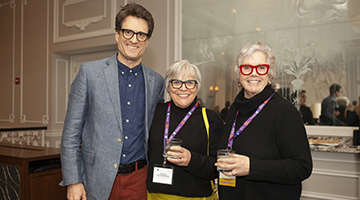
Attendees at a reception at CAA’s 108th Annual Conference in Chicago. Photo: Stacey Rupolo
The Professional Committees address critical concerns of CAA’s members. Each Professional Committee works from a charge that is put in place by the Board of Directors. For many CAA members, service on a Professional Committee becomes a way to develop professional relationships and community outside of one’s home institution, and to contribute in meaningful ways to the pressing professional issues of our moment.
Candidates must be current CAA members, or be so by the start of and throughout their committee term, and possess expertise appropriate to the committee’s work.
Committee members serve a three-year term, with the term of service beginning and ending at the CAA Annual Conference.
It is expected that once appointed to a committee, a member will attend committee meetings (including an annual business meeting at the conference), participate actively in the work of the committee, and contribute expertise to defining the current and future work of the committee.
All committee members volunteer their services without compensation.
The following Professional Committee are open for terms beginning in February 2022. Please click on the links in order to review the charge of each committee, as well as the roster of current committee leadership and members:
- Committee on Design
- Committee on Diversity Practices
- Committee on Intellectual Property
- Committee on Women in the Arts
- Education Committee
- International Committee
- Museum Committee
- Professional Practices Committee
- Services to Artists Committee
- Student and Emerging Professionals Committee
Committee applications are reviewed by the current committees, as well as CAA leadership (CAA’s President, the Vice President for Committees, and Executive Director). Appointments are made by late October, prior to the Annual Conference. New members are introduced to their committees during their respective business meetings at the Annual Conference in February 2022.
In applying to serve on a committee, applicants commit to beginning a term in February 2022, provided that they are selected for committee service.
Questions about the committee charge and current work to the current committee chair and/or to the Vice President of Committees: Lynne Allen (ldallen@bu.edu).
Apply to serve by completing this form. Self-nomination submissions should include a brief statement (no more than 150 words) describing your qualifications and experience, combined with an abbreviated CV (no more than 2–3 pages) into a single PDF document and emailed to CommitteeApplications@collegeart.org. Applications will not be considered complete without a supporting statement and CV.
Deadline for applications: September 13, 2021 (11:59 PM ET)
CWA Picks: June 2021
posted by CAA — June 29, 2021
The June Picks from the Committee on Women in the Arts highlight a selection of events, exhibitions and calls for work that include feminist and womxn artists, and address issues about social justice, the visibility of marginalised subjects, and the digitisation of the everyday. Several of the exhibits engage with the question of relations among the human, non-human and other-than-human bodies but also corporeal entanglements that embed us within the world through embodied experiences.
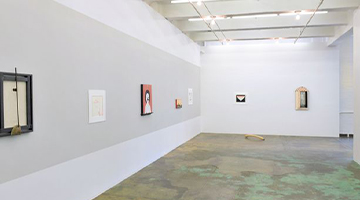
“Anne Minich: Her Bone” installation view of interior gallery
Anne Minich, Her Bone
May 22 – June 26, 2021
Thomas Erben Gallery
This solo exhibition of the Philadelphia-based artist Anne Minich engages with the materiality of the human body. Working across different media Minich explores the themes of pleasure and sexual desire, memory and intimacy, to develop personal mythologies and question the boundaries of corporeality. Her transversal language emphasizes the lived experience of being in the body, living it and dying in it. The works reveal multiple kinships and invite a closer inspection of bodily experiences. The interrelationality is emphasized by unexpected juxtapositions between the media used by Minich, including drawings, wooden sculptures and three-dimensional paintings, and found objects such as shells, fruit pits or bones. Intimate and fragile, these painterly collages invite the viewer to feel and sense with.
Susanne M. Winterling, TEMPERATE – under your skin, nano carriers through the web of life
May 20 – September 19, 2021
Schering Stiftung
Susanne M. Winterling’s installation TEMPERATE confronts the viewer with a fluorescent bacterium, inviting us to engage with nano-organisms that are invisible to the naked eye. Questioning that which is visible and that which remains invisible, the artist created large projection surfaces that show the bacterium moving across scientific images. Playing with scale, Winterling offers us another perspective in which magnified nano-organisms are larger than the visitors, articulating complex relationships between humans and microorganisms and interrogating the relevance of anthropocentric views. Inspired by research on drug-loaded nanocarriers, Winterling collaborated with Simone Schürle, a biomedical engineer and professor for Responsive Biomedical Systems at ETH Zurich along with her research team to bring awareness to the productive relations between forms of life and specifically bacteria equipped with therapeutic agents.
SHILPA GUPTA: Today Will End
May 21 – September 12, 2021
M HKA – Museum of Contemporary Art Antwerp
Shilpa Gupta’s multimedia works bring visibility to the contemporary art scene in Mumbai Critically engaged with identity politics and psychological discourse, Gupta articulates relationships between human diversity and new aesthetics, exploring entanglements between subjectivity and perception often via interactive installations and audio and visual technologies. Context-related and referring to specific cultural and socio-political framings, her works concern themes that, at the same time, are open to interpretation and may become localised to develop new micro-narratives. Gupta’s interest in conflict, borders and censorship can be seen in this exhibition, in which the artist traces the role of diverse media in the production of fear.
Hito Steyerl. I will survive. Physical and virtual spaces
May 19 – July 5, 2021
Centre Pompidou
This exhibition of Hito Steyerl’s major works is a retrospective in reverse, showing the most recent pieces at the beginning, which then lead to the artist’s 1990s films displayed at the end of the show. It is a collaboration between Centre Pompidou and the K21 Düsseldorf. The multimedia installations, some of which have been designed specifically for the exhibition, are a satirical and critical gesture exploring the relationships between the digital worlds, artistic creativity and its presentation, the pandemic and current social conditions. Steyerl’s point of departure is the architecture of the Centre Pompidou, which for over forty years has supported the heritage mission of the museum as a democratic project of a cultural resource centre. Steyerl engages once again in an intimate and astute manner with the invisible contradictions that drive the power structures of global capitalism and interrogates the challenges encountered by cultural institutions in the current moment of crisis.
AD MINOLITI: Biosfera Peluche / Biosphere Plush
July 24, 2021 – May 8, 2022
BALTIC Centre for Contemporary Art
The exhibition of works of Ad Minoliti, a contemporary Argentine artist, takes place in the Baltic in the form of an ‘alien lounge’. Imagined as an extra-terrestrial space that goes beyond the idea of nature, it traverses dichotomous gender and anthropocentric narratives exploring non-binary and non-human identifications and embodiments. This first institutional presentation in the UK and the largest exhibition to date in Europe also features Minoliti’s ongoing project The Feminist School of Painting, which transforms part of the gallery space into an active classroom holding bi-weekly painting workshops. In her practice Minoliti activates feminist and queer theory to deconstruct the traditional genre of painting and art historical narratives, and generate alternatives that are intersectional, inclusive and diverse.
A Yellow Rose Project
June 1 – September 15, 2021 (virtual tour available)
BU Art Galleries
A Yellow Rose Project, a collaborative photography project between women from the United States, was initiated in 2019 to mark the 2020 centennial anniversary of the ratification of the 19th Amendment. On that day women wearing yellow roses, symbolising the fight for equal representation, gathered into a concerted bodily collective and waited to hear if their right to a voice in the government would finally be granted. The photographs in the project engage with the complicated narratives attached to the 19th Amendment and its anniversary, and confront a multitude of histories, some of which are more visible than others. A remarkable historical event to celebrate also marks a troubling moment when only some women were given the right to vote. The collection of visions and voices opens up a dialogue on the power of the movement that led to the ratification, but also on erasures and the need to remember. The presented body of work celebrates women’s resilience and bodily gestures, including the gesture of the taking a photograph, that create a visual archive of vulnerability that through a concerted collective effort becomes a strength in the common.
Photo Vogue Festival 2021: REFRAMING HISTORY Open Call
Who is telling the story? The 6th edition of the Photo Vogue Festival ‘REFRAMING HISTORY’ invites projects that propose an alternative, different way of telling a tale. Selected projects will be featured in the exhibition.
Support CAA using Amazon Smile
posted by CAA — June 22, 2021

Did you know that you can make a gift to CAA using Amazon Smile? Amazon donates 0.5% of the price of eligible smile.amazon.com purchases to the organization selected by customers — at no cost to you. Our charity link will automatically direct you to Amazon, where you will be asked to confirm that you would like your Amazon purchases to support CAA.
As a 110-year-old organization, we are proud to serve a global community of artists, designers, students, and scholars through advocacy, intellectual engagement, and a commitment to the diversity of practices and practitioners. During this pivotal moment it is more important than ever that we support our visual arts community. We hope that you will join us in our mission and help us bring our programs and publications to life by using Amazon Smile today.
News from the Art and Academic Worlds
posted by CAA — October 14, 2020
|
|
|
|
|
|
Want articles like these in your inbox? Sign up for our weekly newsletter:
News from the Art and Academic Worlds
posted by CAA — October 07, 2020
|
|
|
Want articles like these in your inbox? Sign up for our weekly newsletter:



